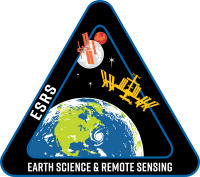STS51I-37-83
| NASA Photo ID | STS51I-37-83 |
| Focal Length | 250mm |
| Date taken | 1985.08.28 |
| Time taken | 22:18:33 GMT |
Resolutions offered for this image:
5248 x 5248 pixels 640 x 640 pixels 5700 x 5900 pixels 500 x 518 pixels 640 x 480 pixels
5248 x 5248 pixels 640 x 640 pixels 5700 x 5900 pixels 500 x 518 pixels 640 x 480 pixels
Cloud masks available for this image:
Country or Geographic Name: | PACIFIC OCEAN |
Features: | EYE--TYPHOON ODESSA |
| Features Found Using Machine Learning: | |
Cloud Cover Percentage: | 100 (76-100)% |
Sun Elevation Angle: | 24° |
Sun Azimuth: | 90° |
Camera: | Hasselblad |
Focal Length: | 250mm |
Camera Tilt: | Low Oblique |
Format: | 5017: Kodak, natural color positive, Ektachrome, X Professional, ASA 64, standard base |
Film Exposure: | Normal |
| Additional Information | |
| Width | Height | Annotated | Cropped | Purpose | Links |
|---|---|---|---|---|---|
| 5248 pixels | 5248 pixels | No | No | Earth From Space collection | Download Image |
| 640 pixels | 640 pixels | No | No | Earth From Space collection | Download Image |
| 5700 pixels | 5900 pixels | No | No | Download Image | |
| 500 pixels | 518 pixels | No | No | Download Image | |
| 640 pixels | 480 pixels | No | No | Download Image |
Download Packaged File
Download a Google Earth KML for this Image
View photo footprint information
Download a GeoTIFF for this photo
Image Caption: STS51I-37-0083 Eye Of Typhoon Odessa, Pacific Ocean August 1985
This spectacular, oblique view shows the eye of typhoon Odessa, southeast of Japan in the Pacific Ocean. The eyewall drops into the center of the image. Outboard from the eye are large thunderstorms billowing on top of the cloud mass and gravity waves. An astronaut's perspective from low Earth orbit provides details of large storm systems that cannot be resolved from other meteorological satellites.
This spectacular, oblique view shows the eye of typhoon Odessa, southeast of Japan in the Pacific Ocean. The eyewall drops into the center of the image. Outboard from the eye are large thunderstorms billowing on top of the cloud mass and gravity waves. An astronaut's perspective from low Earth orbit provides details of large storm systems that cannot be resolved from other meteorological satellites.

